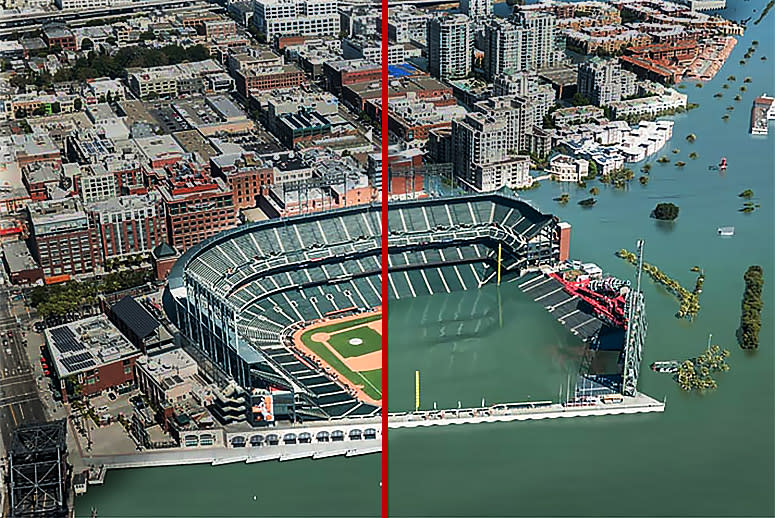10 Images Show What Coastal Cities Will Look Like After Sea-Levels Rise

Sea-level rise is coming. Even if we keep global temperatures from rising more than 2 degrees Celsius above historic norms—the benchmark for avoiding catastrophic climate warming—we may still see oceans creep four feet farther inland by 2100, and rise 20 feet as soon as 2200.
That’s according to a new study published in the July issue of Science. Researchers looked at three decades’ worth of data on ice cap oxygen levels, then analyzed it to determine how varying amounts of CO2 in the modern-day atmosphere lined up with atmospheric CO2 and sea levels in the prehistoric past.
C02 levels were last at today’s concentration—roughly 400 parts per million and rising—about 120,000 years ago, according to the researchers. Back then, the average global temperature was around 1 to 2 degrees higher than it is now, and the sea level was about 20 feet higher.
RELATED: Sea Level Rise Creates a Hard Choice: Rebuild or Retreat?
If you’re not a climate scientist, it can be hard to imagine what these numbers mean for the real world. So the research group Climate Central, with artist Nickolay Lamm, decided to show what U.S. coastal cities can expect if we keep burning oil, coal, and gas at the current rate.
Ben Strauss of Climate Central used the organization’s peer-reviewed research data and methods to calculate how 25 feet of sea level rise would be likely to affect various coastlines, based on their tidal conditions. Then, Lamm created images that offer a ground level view of what losing 440,000 square miles of land along global coastlines—home to 375 million people—looks like.
“While 25 feet is not the same as six meters (about 20 feet), 20 feet is the ‘lower’ limit the paper puts on expected sea-level rise from 2 degrees Celsius of warming,” Strauss said.
So, Why Should You Care? Even if we cut greenhouse gas emissions significantly, sea levels are expected to rise between one and four feet by 2100 owing to climatic changes already under way. Experts believe they will continue rising for centuries to come. But we can affect how much they do by slashing global carbon pollution in the next few decades. That would help make this a problem we can handle, instead of one that overwhelms us.
Here are 10 images that compare how a few coastal communities in the U.S. look today with what they may look like with 25 feet of sea-level rise.
(Images: Courtesy Climate Central)
(Correction: A previous version of this post had listed AT&T Park, San Francisco, as AT&T Field in Chattanooga, Tenn.)
Related stories on TakePart:
• Melting Glaciers Aren’t Just Raising Sea Levels, They’re Polluting the Oceans
• Watch Divers Free Sharks and Other Marine Animals Caught in Deadly ‘Ghost Nets’
Original article from TakePart

